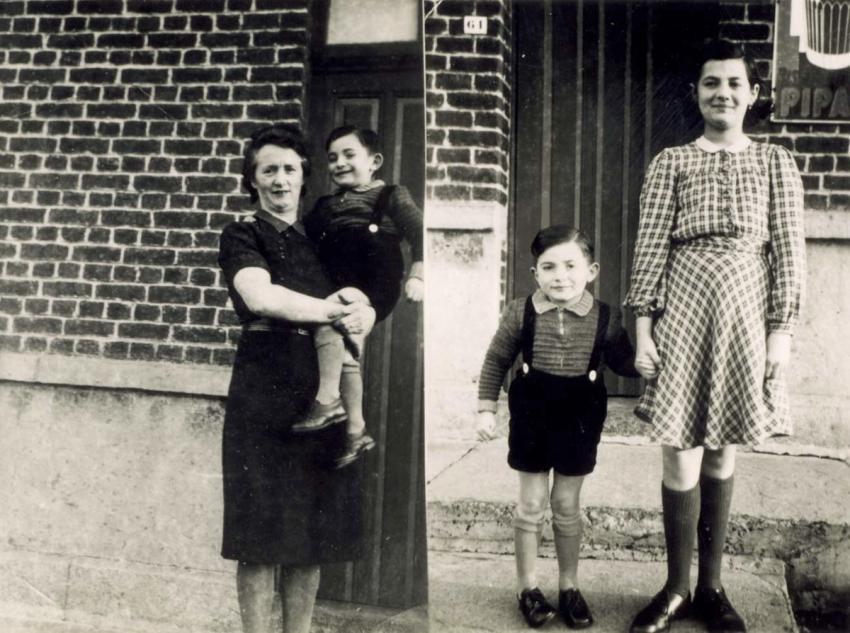Of the 65,000 Belgian Jews murdered in the Holocaust, some 29,000 were detained in the Mechelen transit camp and the Breendonk fort, and were deported from Mechelen to Auschwitz between summer 1942 and September 1944. In Belgium, Jewish and non-Jewish underground organizations worked together to save Jews.
In the summer of 1942, the Germans started deporting the Jews of Belgium to Auschwitz. In response, a Jewish underground movement, the Committee for the Defense of Jews (CDJ) commenced its activities. The Committee had connections with other resistance groups in Belgium and with the AJB (Association of Jews in Belgium), and it worked to save Jews until the deportations ended in September 1944. The Committee made contact with the Church, raised funds, and assisted Jews in finding hiding places. The organization's Children's Department worked in cooperation with the National Agency for Children, headed by Yvonne Nèvejean, later recognized as Righteous Among the Nations, and succeeded in hiding some 4,000 children.
Both the rescuers and the hidden lived in perpetual terror of denouncement. In cases where Jews were discovered in hiding, the rescuers had to resort to cover stories – that they were distant relatives, or the children of friends – but these were not always successful, and sometimes neighbors or passers-by would betray them. In 1943-44, approximately 9,000 Jews in hiding in Belgium were given up to the Nazis. Some were betrayed by way of an anonymous letter. On the other hand there were also neighbors who knew or suspected, but did not alert the authorities, and sometimes even warned the Jews and their rescuers if they feared approaching danger.
From right: 13-year-old Gabi Gucia Szyper and her brother, Charles Yehezkel Szyper, aged 3. From left: Yehezkel in the arms of his rescuer, Fernande Vraux .During the Holocaust, they were hidden in the home of Fernande and Henri Vraux, in the village of Gaurain-Ramecroix near Tournai, Belgium, where they both stayed until March 1946.
The Szyper family – Yitzhak Haim and Hanna and their three children, Haya, Gabi-Gucia and Naftali – immigrated to Belgium, where Charles-Yehezkel was born in 1939. During the Holocaust period, the family was forced to separate in order to increase their chances of survival. Yitzhak Haim and Hanna Szyper brought Gucia and Yehezkel to the Vrauxs, a Christian couple, who took them in. The rest of the family was murdered. Gucia continued living in Belgium after the war, while Yehezkel immigrated to Israel, where he fell in battle in the Six Day War.
In 2000, Gucia Szyper submitted Pages of Testimony in memory of her parents and siblings who were murdered in the Holocaust.
Yad Vashem Photo Archives 5784

